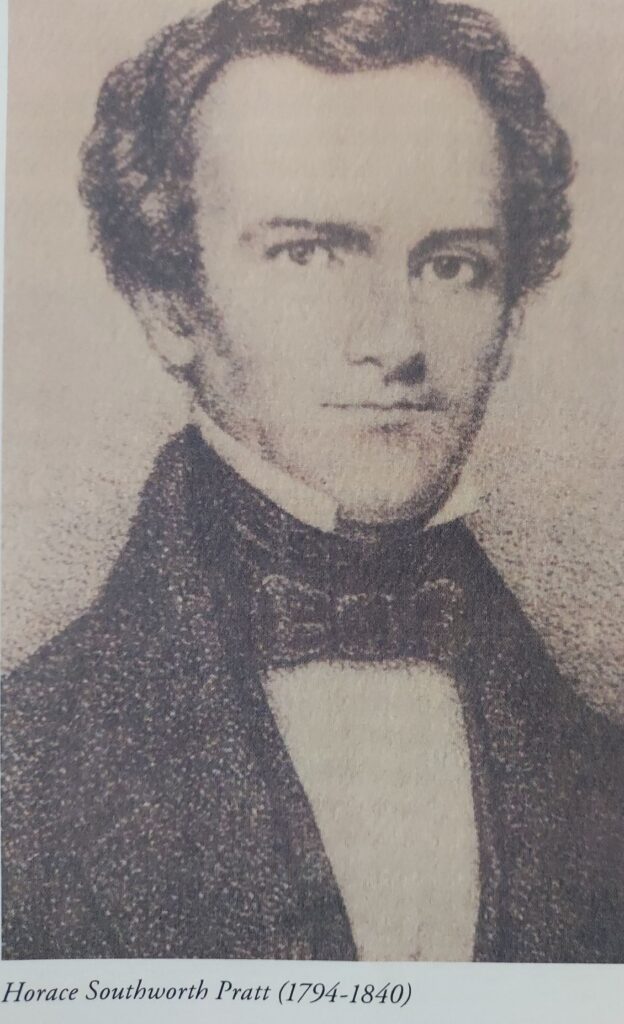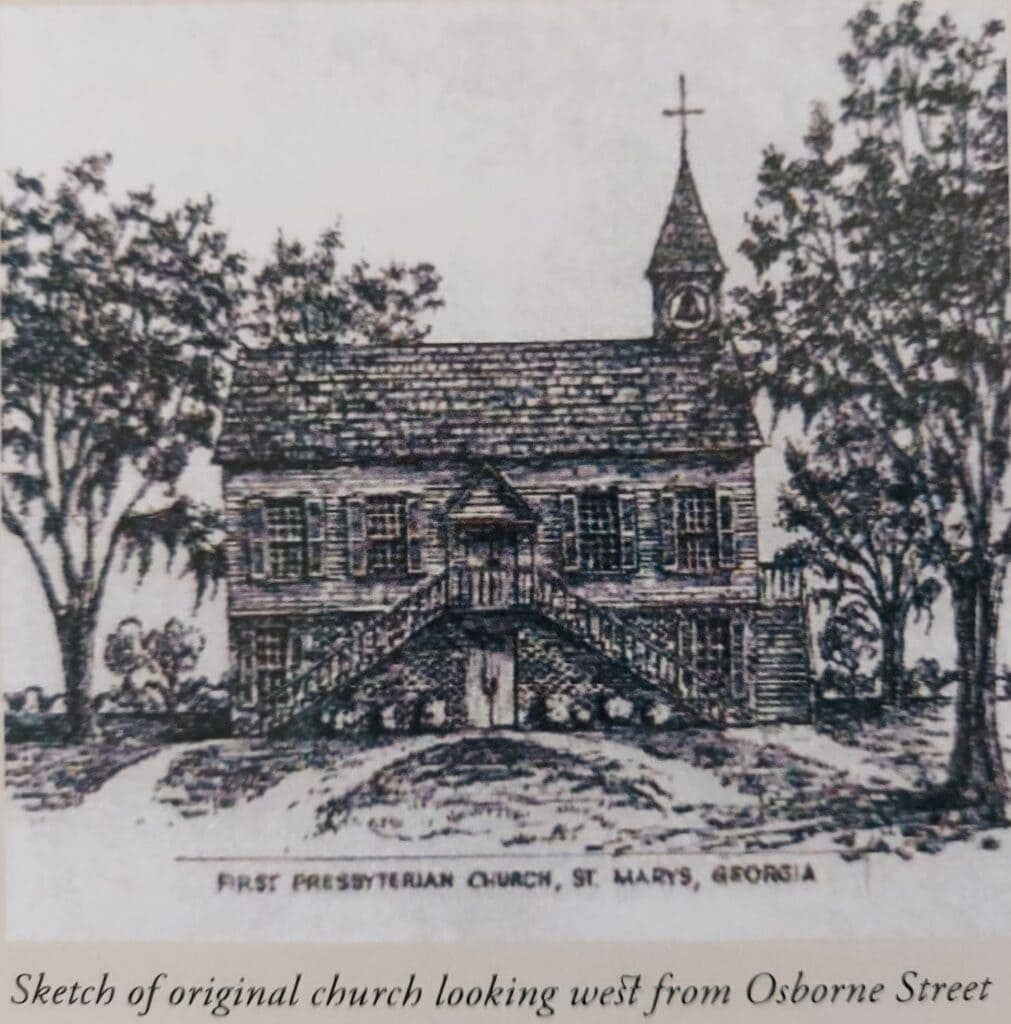The First Presbyterian Church: An Enduring St. Marys Icon
Few places can boast as many historic churches as St. Marys. None besides St. Marys can claim the second oldest church building in Georgia and the state’s oldest building in continuous use as a church. Its First Presbyterian Church earns both of these distinctions. Below we explore the picturesque architecture and dramatic history of St. Marys’ oldest religious structure.

Completed in 1808 and initially called the Union Church, this house of worship was non-denominational, welcoming all (except Methodists). However, change came in 1821 when a young Presbyterian missionary, Horace Pratt of New Jersey, migrated to St. Marys. The next year he gathered twenty-nine people to form the “Presbyterian Church of St. Marys” and served it for seventeen years, drawing a devoted following and greatly increasing its membership. (He built nearby Orange Hall as his private residence in 1829.)

In addition to offering weekly services, Pratt started Sunday School classes, Bible studies, missionary and temperance societies, and singing classes for his choir and other church members. He also tutored students preparing for college in the church’s basement, which served as a library and later a school on weekdays. Pratt spread his influence beyond St. Marys as well; he was instrumental in establishing the First Presbyterian Church in Tallahassee.
In those days, ministers were paid from money raised by renting church pews. At the Presbyterian church, pew rentals also provided payment for the bellringer, cleaning, maintenance and repairs, candles, etc. The highest subscribers were given their choice of pews for the year. One such parishioner was John Pottle, a prominent St. Marys citizen, who rented pews for his family for two decades until 1850. This practice was discontinued around that year, but you may still see some old St. Marys names engraved on the church’s pews.
The building’s original appearance differed from that which we see today. Originally, a double staircase led to a landing before the main entrance on the east side (facing Osborne Street). On the northeast outside wall, a stairway led to a gallery for the enslaved. The belltower was originally on the north end (opposite its present location) and supposedly housed a bell cast by Paul Revere. It is not known exactly when the main entrance was moved from the east to the south end, but in 1898 the bell tower was transferred to its present location. This steeple was the highest elevation in town, prompting local boys to frequently climb atop it with the aid of a lightning rod.

Many locals recount the centuries-old tale of a horse’s being found in the original belltower. It may have been placed there by a smuggler who used the animal to distract the locals, unload his illegal cargo, and escape undetected. In the 1920s, some local boys tried to recreate this episode with a cow, but as you might expect, this attempt was unsuccessful.
The church barely escaped destruction during the Civil War when federal troops occupied and laid waste to the town, but in the next century it was not so lucky. On December 3, 1956, a fire at the church destroyed the south wall and entrance, severely damaging the roof and ceiling and melting the original bell. This bell (possibly Paul Revere’s) was placed in a bag and taken to someone’s home where it has since been lost.
While St. Marys residents were gathered observing the church burn that night, they began donating money for its restoration. George Brumley of the Gilman Paper Company found a building with wood the same age as the church’s and purchased it for this project. The church was restored and re-dedicated within a few months and continued to be recognized statewide as “one of the finest examples of early church architecture in Georgia.”
The First Presbyterian Church invites us to admire not just its charming façade, which provides a pleasing white accent among downtown’s colorful historic homes and verdant pecan and cedar trees; it spurs us to appreciate the determination of St. Marians, who labored through war and natural disasters to ensure its survival. Its beauty as well as its scars symbolize locals’ perseverance and dedication to preserving their history.
For a visit to the First Presbyterian Church and details on the horse in the bell tower, join our St. Marys Walking Tour! Click here for information and reservations.
Interested in attending services? Find out how here!




2 Comments
Sam Taylor · January 14, 2023 at 8:38 am
Very well researched and narrated piece, Molly. You are a gifted curator.
Molly Verlin · January 14, 2023 at 1:23 pm
Thanks Sam, it’s easy to get excited about the history here! Glad you enjoyed it.
Comments are closed.